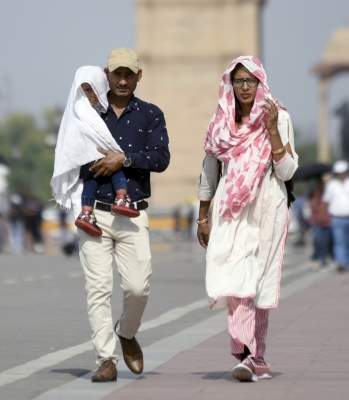New Delhi (IANS) Human-caused climate change made April’s record-breaking humid heatwave in India, Bangladesh, Laos, and Thailand at least 30 times more likely, a rapid attribution analysis by an international team of leading climate scientists as part of the World Weather Attribution group said on Wednesday.
The study also concludes that the high vulnerability in the region, which is one of the world’s heatwave hotpots, amplified the impacts.
In April, parts of south and southeast Asia experienced an intense heatwave, with record-breaking temperatures that passed 42 degrees Celsius in Laos and 45 degrees in Thailand. The heat caused widespread hospitalisations, damaged roads, sparked fires and led to school closures.
The number of deaths remains unknown.
Across the world, climate change has made heatwaves more common, longer, and hotter. To quantify the effect of climate change on the Asian heatwave, scientists analysed weather data and computer model simulations to compare the climate as it is today, after about 1.2 degrees of global warming since the late 1800s, with the climate of the past, following peer-reviewed methods.
The analysis looked at the average maximum temperature and maximum values of a heat index for four consecutive days in April across two regions, one covering south and east India and Bangladesh, and a second one including all of Thailand and Laos.
The heat index is a measure that combines temperature and humidity and reflects more accurately the impacts of heatwaves on the human body.
In both regions, the researchers found that climate change made the humid heatwave at least 30 times more likely, with temperatures at least 2 degrees hotter than they would have been without climate change. Until overall greenhouse gas emissions are halted, global temperatures will continue to increase and events like this will become more frequent and severe.
In India and Bangladesh, events like the recent humid heatwave used to occur less than once a century on average; they can now be expected around once in five years, and if temperature rise reaches 2 degrees — as will happen within around 30 years if emissions are not cut rapidly — events like this will occur, on average, at least once every two years.
In Laos and Thailand, the scientists found that an event like the recent record humid heatwave would have been nearly impossible without the influence of climate change, and it is still a very unusual event that can only be expected around once in 200 years, even with the influence of human-caused climate change.
But if temperature rise reaches 2 degrees, it will become much more common, occurring about once in 20 years.
While high temperatures are the norm in south and southeast Asia, early heatwaves such as this one are particularly damaging. People who are most exposed to the sun and vulnerable populations are routinely the worst impacted. The current patchwork of heatwave solutions must be improved to account for inequalities and existing vulnerabilities, the scientists said, adding that heat action plans should be inclusive and comprehensive, and ensure access to basic services, such as water, electricity and healthcare.
The study was conducted by 22 researchers as part of the World Weather Attribution initiative, including scientists from universities and meteorological agencies in India, Thailand, Australia, Denmark, France, Germany, Kenya, the Netherlands, the UK, and the US.
Chandra Sekhar Bahinipati of the Indian Institute of Technology, Tirupati, said: “Although we have recognised heatwaves as one of the deadliest disasters, particularly in countries like India, Bangladesh, and Thailand, there is a lack of knowledge with respect to who is vulnerable, loss and damage estimation, household coping mechanisms, and the most effective heat action plans.
“Except for the human casualties, other economic and non-economic loss and damage indicators are not documented.
“This creates a dearth in assessing the extent of risk, who is vulnerable, and also operationalising any adaptation planning.”

